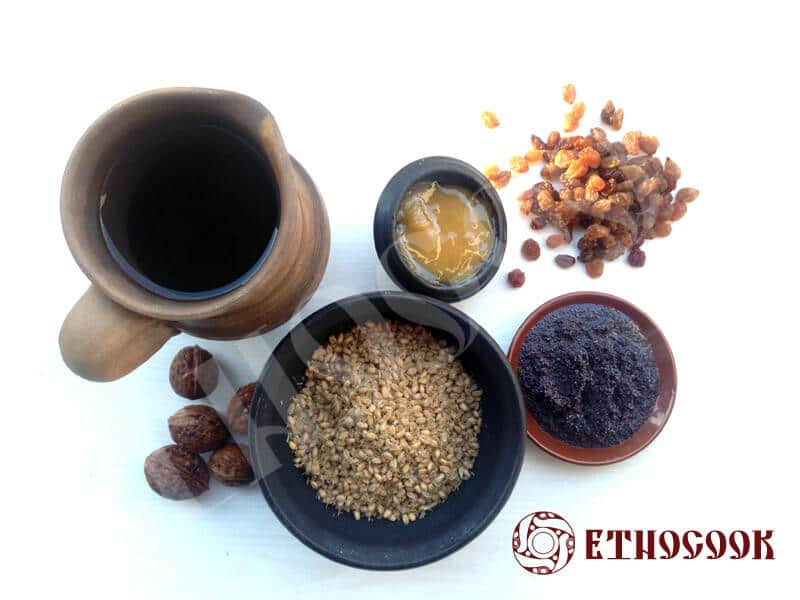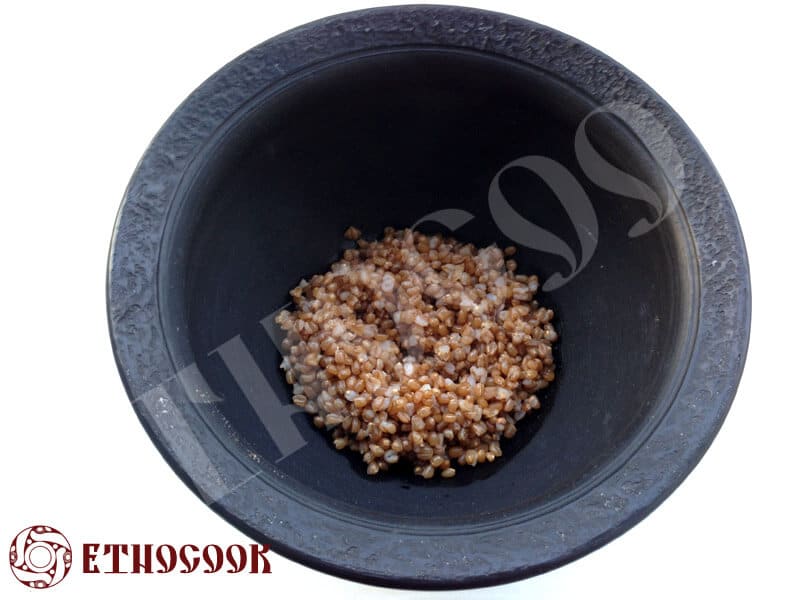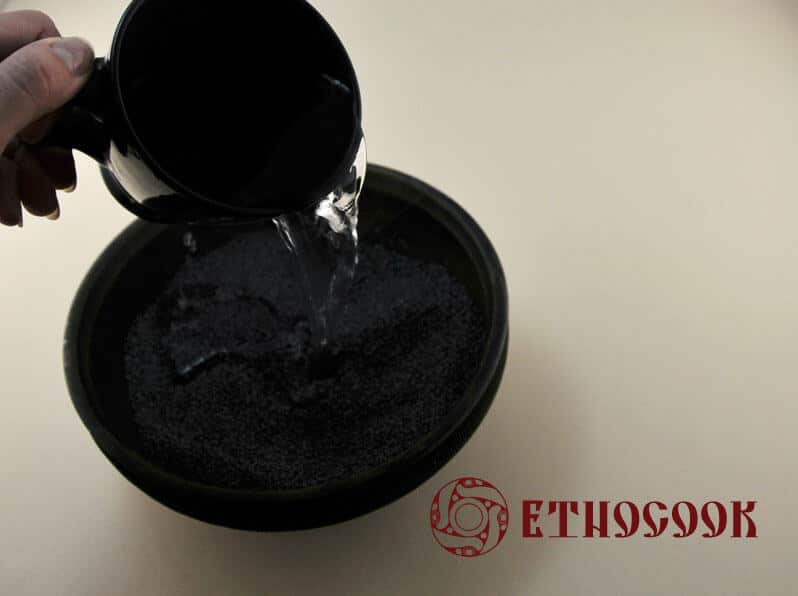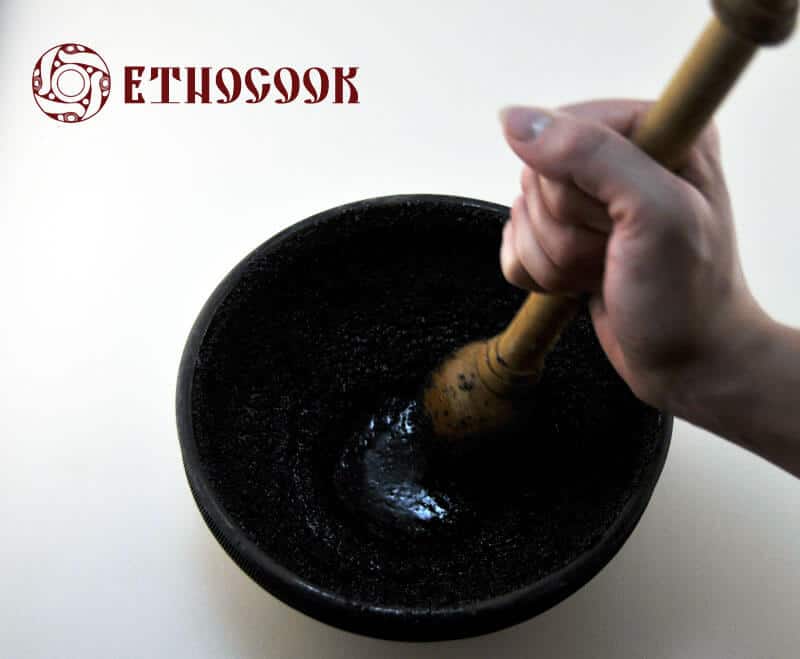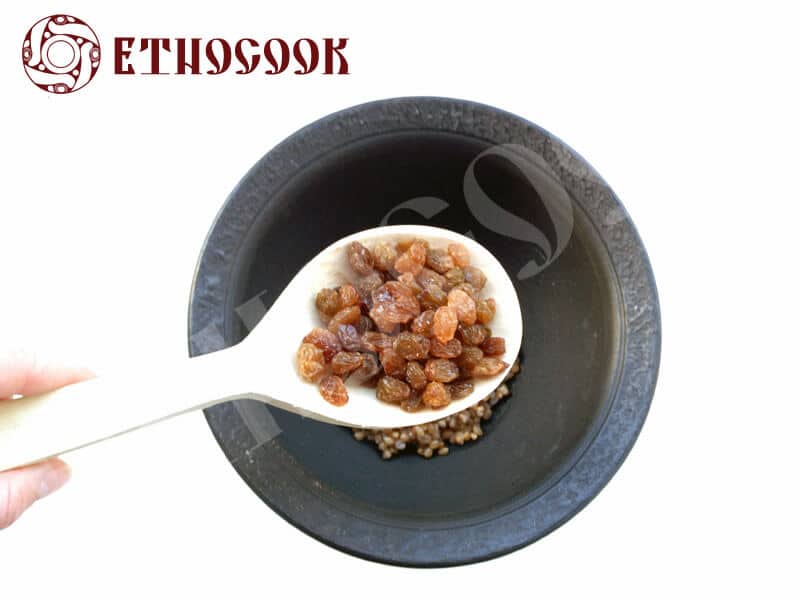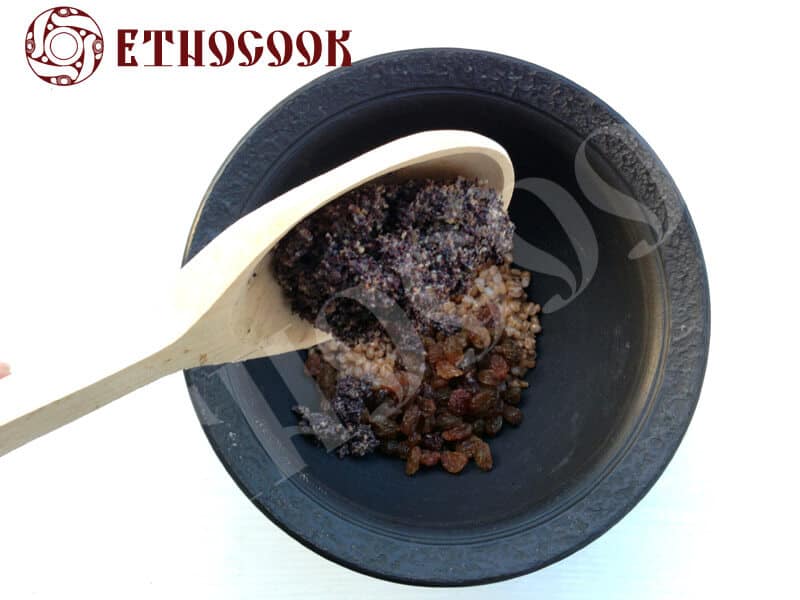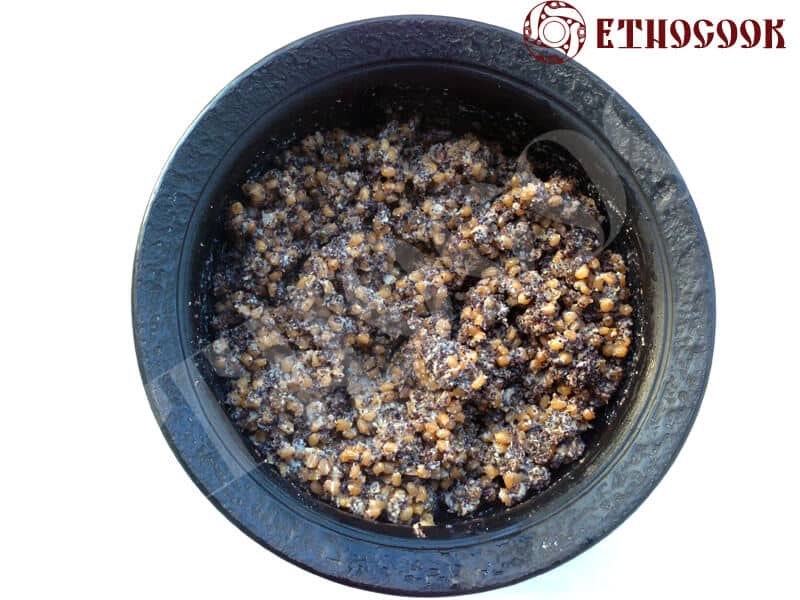What is Kutia?
Kutia (Kutya) is an old Ukrainian Christmas food known since pre-historic times. Ethnographic researches show that this authentic dish has been cooked by the Ukrainians since the Neolithic Era (10,000–4,500 BCE). It is a sweet porridge of wheat grains with honey and poppy seeds. Kutia is a very ancient sacral dish cooked only for Winter Holidays (Ukrainian Christmas). The Ukrainian traditional cuisine Etnocook has reconstructed the ethnic recipe of Kutya known since the end of the Stine Era when people just began farming and trending wheat fields.
When should we eat Kutia?
Kutya is the main of twelve dishes served for Sviata Vecheria (Svyata Vecherya, twelve-dish Christmas Eve supper in Ukraine). Traditionally Ukrainian Christmas is celebrated three times during winter with different dishes but Kutia is the same each and every time.
The big pot with Kutya is put in the best place in the house and the first tablespoon was taken by the head of the family and symbolically thrown to the ceiling addressing dead ancestors to join the supper. After this, the head of the family tastes the Ukrainian Christmas pudding and shares the pot with other members of the family. Then all the other Ukrainian Christmas dishes are eaten.
Kutia is served with the traditional Ukrainian compote from dried fruits and berries called Uzvar. Actually, the was a belief that if to drink water during the Ukrainian Christmas Eve that can lead to the feeling of extreme thirst during the harvesting period in hot summer, as everything was connected in the Ukrainian ancestors’ ideology.
What is Christmas Wheat?
The ancient Ukrainian Christmas recipe of Kutia from the traditional ethnic cuisine Etnocook is very simple. The main ingredients are wheat grains (wheatberries), water, poppy seeds, and honey. Often walnuts and raisins are added to this wheat berry pudding, to taste. There are a lot of recipes with barley or even millet, but the ethnic Kutia consists of only three main ingredients: wheat, honey water, and poppy seeds.
The main ingredients for the authentic Ukrainian Christmas dish Kutya are wheat berries. Etnocook reminds the definition of wheat berry (wheatberry) is a whole wheat seed with kept endosperm, bran, germ. The husk is taken off, and there is a special ritual when a chef before soaking wheatberries takes a handful by handful of them and blows the remains of husks away.
How do you say Kutia?
/kutia/
The word ku-tia has two syllables. The first vowel /u/ is short as in the word book and /ia/ is read as in the word India
What does Kutia symbolize?
Kutia symbolizes honoring to ancestors. It’s sacrificial food, a kind of offering for the deceased. After the Christmas Eve supper Kutia was left on the table with spoons for the spirits of dead family members and this shows the endless connection between everybody in one bloodline.
Kolyvo is a traditional dish like Kutia, but without poppy seeds. It is served at remembrance services and tasted from one bowl by everyone present.
After Kutia all the other dishes are served, among them such Ukrainian Christmas dishes as Borshch and Vushka with mushrooms, sauerkraut, or fish filling Varenyky, Pampuhy.
Sweet Ukrainian cereal dish of of wheat, honey, poppy seeds and nuts
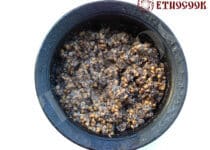
Kutia cooking Instructions
- before soaking, wheat can be dried in 100C oven for 1 hour, stirring from time to time
- pearl barley or other similar grain can be taken instead of wheat, but Etnocook reminds you that it will be not the traditional Ukrainian recipe
- more or less honey or water can be added, to taste
- honey can be replaced by sugar (1:2)
- sometimes other kinds of nuts are added
Ingredients of the Kutia
- wheat berries - 500 g
- honey - 3 tbsp
- water - 3 l
- poppy seeds - 50 g
- walnuts - 100 g, to taste
- raisins - ~80 g, to taste
- salt - ~ 4 g, to taste
Instructions:
1. Prepare all the ingredients for the Ukrainian Kutia
Clean and prepare the wheat grains, poppy seeds, water, honey, additionally raisins, walnuts for Kutya. The best is spring water or filtered. Separate wheat from shelling if there is any.
2. Cook the wheat grains for the Ukrainian Kutia
Сarefully wash wheat in cold water three times, soak in 1 liter of spring or filtered water for 5 hours (or for the night). Drain water, add 2 liters of fresh water, add salt and 1 tsp of sugar to taste, bring to a boil. Reduce the fire to a minimum and cook it under a closed cover until the grains become soft (~ 30-40 min.). If necessary, add warm water if it is very boiling up. After cooking, drain water, and put the finished wheat into a deep dish, in which ingredients for Kutia will be mixed.
3. Prepare poppy seeds for Kutya
Add hot water to poppy seeds in a deep bowl and soak for 1 hour. Drain and strain through the gauze. Grind to a homogeneous whitish mass.
4. Add raisins and other ingredients to Kutya (optional)
Add raisins and all the other not necessary ingredients for Kutia to wheat in a deep bowl and mix. Etnocook draws your attention that this is done to taste and has nothing to do with the authentic recipe of the ethnic Ukrainian Kutya.
5. Prepare Kutia nuts and poppy seeds
Finely cut nuts, mix with poppy seeds, add to other ingredients for Kutya.
6. Cook honey sauce for Kutia wheat pudding
In a glass (150 ml.) of warm water (~ 40C) put honey and mix. Add to the other ingredients of Kutia.
7. Serve the Ukrainian Christmas Kutia
Serve lightly warm Kutia for Sviata Vecheria (Sviatvechir) as the main dish. Actually, Kutia is the first out of twelve dishes served for Sviata Vecheria to be tasted. Can be eaten warm or cold.
